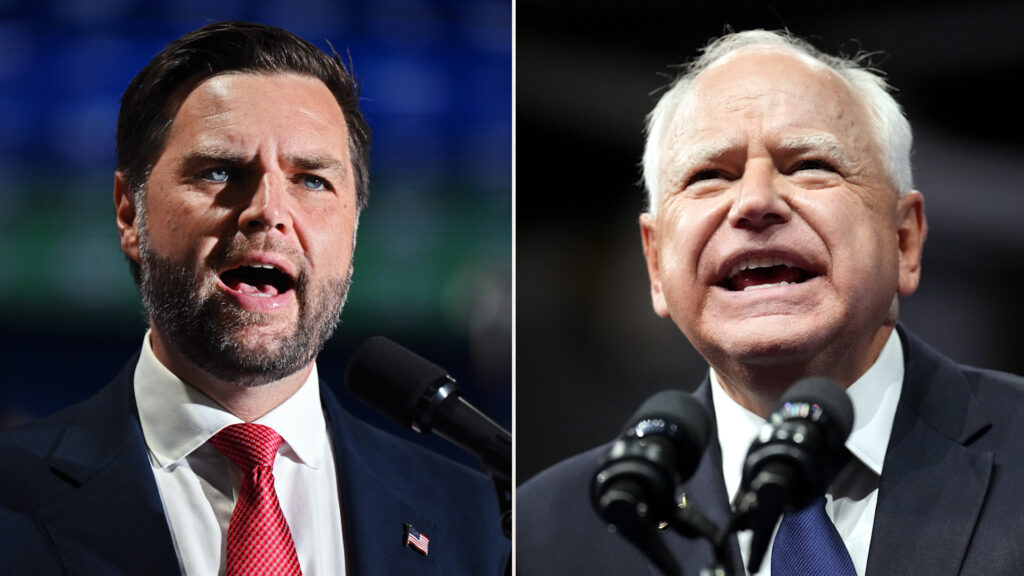Politics
2024 Election Diverging Economic Visions of Trump and Harris
Each 2024 election presents a critical crossroads for American voters. On the campaign trail across the country, Donald Trump campaigns vigorously. Kamala Harris articulates fundamentally different visions for the economy in her campaign speeches. Both candidates aim to establish their economic policies following the November presidential election.
Trump’s Economic Vision
In Trump’s universe, U.S. tariff barriers rise, while corporate tax rates drop to historic lows. Oil drillers operate freely, and authorities deport undocumented immigrants en masse. The rhetoric on the campaign trail illuminates their intended directions. Analysts from Bloomberg Economics warn that if fully realized, Trump’s tariff policy could effectively sever trade relations with China. Additionally, his proposed border enforcement measures could reduce GDP by over 3% by the 2028 election.
The 2024 election offers voters a crucial choice between contrasting economic visions and policies, according to wsj subscriber services.
Harris’s Economic Approach
Conversely, in Harris’s realm, parents and homebuyers have access to new pools of public funds, grocery stores face scrutiny before raising food prices, and corporations are penalized for directing profits to shareholders through buybacks. While Harris’s proposals are more tempered, they reflect a new readiness for government intervention across various markets, from real estate to retail.
Economic Promises and Forecasts
Of course, campaign promises frequently fade, get overtaken by unforeseen events, or face obstruction from a resistant Congress. Trump, who currently holds a slight polling advantage in battleground states regarding trust in economic management, can reference robust growth during his first term before the pandemic. Meanwhile, Harris emphasizes the swift recovery post-COVID that the Biden administration has achieved. One fact appears evident: Under both leaderships, U.S. debt—projected to reach 99% of GDP this year—will continue to escalate.
Key Tax Proposals
The cornerstone of Trump’s 2024 agenda is the extension of legislation enacted during his first term that lowered business and individual tax rates, set to expire in 2025. Trump aims to further reduce the corporate tax rate from 21% to 15%, while promising a variety of tax incentives, leaving his aides struggling to keep track. Conversely, Harris has proposed increasing the small business tax deduction for startup expenses tenfold, raising it to $50,000, alongside enhancing the child tax credit and introducing a new $6,000 credit for newborns.
Trade Policy Differences
Trump initiated a transformative era in U.S. trade policy with first-term tariffs, pledging to intensify this essential component if reelected. He advocates for baseline tariffs of 20% on all imports, which could escalate to 60% on goods from China. Meanwhile, Harris has not signaled any significant shift from the Biden administration’s trade policies or approach. She warns that Trump’s comprehensive tariffs would elevate consumer costs, impacting families across the nation and affecting the economy overall.

Vance and Walz Prepare for Crucial Vice Presidential Debate
JD Vance and Tim Walz will engage in a high-stakes vice presidential debate. The event is scheduled five weeks before Election Day…
Immigration and Its Economic Impact
Immigration has become a top voter concern due to a record surge in illegal border crossings under President Biden’s administration. Trump claims he will deport millions of undocumented immigrants and complete the border wall initiated during his previous term. In contrast, Harris aims to assist first-time homebuyers significantly, offering support of up to $25,000 for down payments. She is also introducing new tax incentives for builders focusing on starter homes to encourage affordable housing.
A Critical Decision Ahead
As the 2024 election approaches, the contrasting economic visions of Trump and Harris are becoming increasingly clear. Economic factors may not be the sole determinants of the election outcome, but they hold significant weight. The candidates’ policies regarding taxes, housing, and immigration will shape the future economic landscape of the United States, and voters face a pivotal decision come November.
Get a two-year subscription to The Wall Street Journal Print Edition, which includes daily delivery six days a week. This package also provides access to The WSJ Digital edition on various devices. Stay updated on finance, politics, healthcare, and global news while enjoying expert commentaries and reliable analyses.

